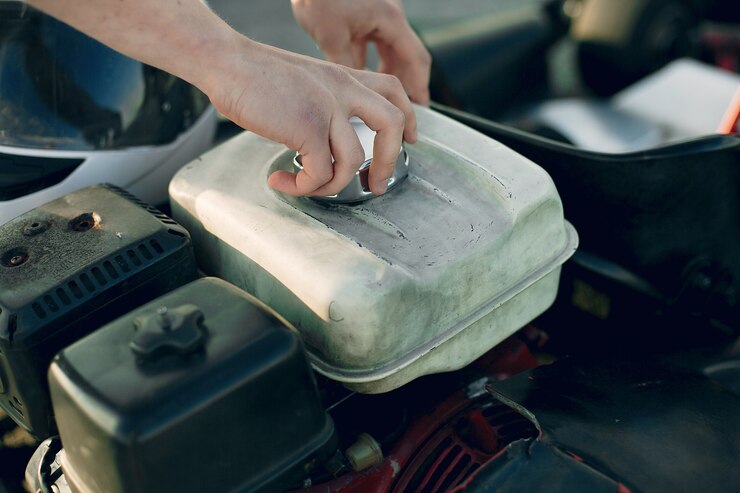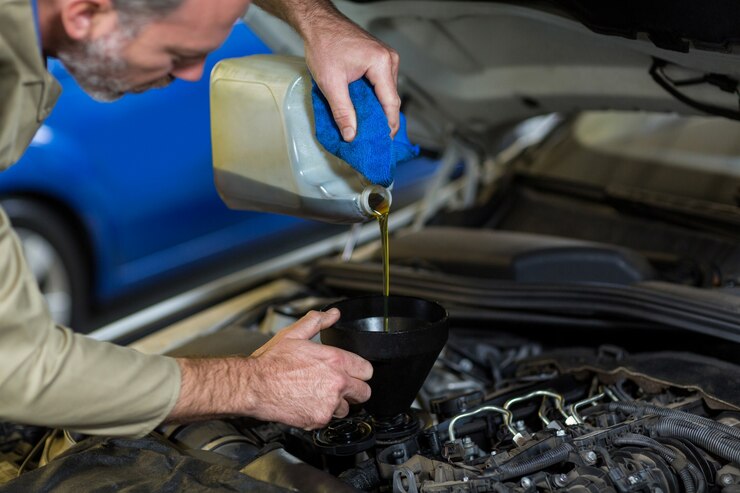If you’re passionate about optimizing your vehicle’s performance, you may have come across the term “oil catch can” while browsing through forums or automotive websites. Despite being a small and relatively inexpensive modification, an oil catch can can significantly contribute to maintaining your engine’s health and prolonging its lifespan. Whether you’re driving a high-performance car or a daily commuter, the benefits of installing an oil catch can are hard to overlook.
In this article, we’ll dive into what an oil catch can is, how it works, its benefits, and why it is becoming increasingly popular among car enthusiasts. You’ll also learn about installation and some essential tips to maximize its effectiveness.
What is an Oil Catch Can?

An oil catch can is a device installed between the crankcase ventilation system and the intake system of an internal combustion engine. Its primary function is to “catch” oil vapors, excess moisture, and other contaminants before they re-enter the engine through the intake system.
Modern engines use a Positive Crankcase Ventilation (PCV) system to release pressure that builds up in the crankcase. However, this process also allows oil vapors and other byproducts to be vented into the intake manifold, where they can mix with air and fuel. Over time, these oil vapors accumulate in the intake, throttle body, and other engine components, leading to carbon build-up and reduced efficiency.
The oil catch can traps these contaminants, preventing them from recirculating in the engine and causing potential damage.
How Does an Oil Catch Can Work?
The oil catch can is a simple yet highly effective device. It connects to the engine’s PCV or breather system through hoses. As oil vapors and gases pass through the system, the catch can filters them, collecting the oil and preventing it from reaching the intake manifold.
Typically, the catch can includes an internal baffle or filter that allows air and vapors to flow freely while capturing the heavier oil particles. Over time, the catch can collects the oil, which needs to be drained manually to maintain its functionality.
By intercepting these harmful oil vapors, the oil catch can ensures cleaner air enters the combustion chamber, improving engine performance and longevity.
Why Do You Need an Oil Catch Can?
While an oil catch can isn’t mandatory, it offers several benefits, particularly for those seeking to enhance their vehicle’s performance and extend engine life. Here’s why an oil catch can is a worthwhile investment:
- Prevents Carbon Build-up: One of the primary advantages of installing an oil catch can is preventing carbon deposits from forming on your engine’s intake valves, throttle body, and other components. Direct-injection engines, in particular, are more prone to carbon build-up since fuel does not clean the intake valves as it would in traditional port-injection engines. Over time, these deposits can restrict airflow and reduce engine efficiency.
- Improves Engine Performance: By keeping the intake system free of contaminants, an oil catch can ensures the engine runs smoother. It helps maintain optimal air-to-fuel ratios, allowing the engine to perform more efficiently, which can lead to better throttle response and fuel economy.
- Reduces Oil Contamination: Catching oil vapors before they reach the intake reduces the chances of oil contamination in the combustion process. This can lower the risk of premature detonation or “knocking,” which can severely damage the engine.
- Protects Engine Components: The oil catch can protects sensitive engine components from the harmful effects of oil deposits. This helps preserve parts like the intake manifold, intercooler, and turbocharger (in turbocharged engines), preventing unnecessary wear and tear.
- Cost-Effective Maintenance: While installing an oil catch can has upfront costs, it can save money in the long run by reducing the need for engine cleaning services, valve cleaning, or other repairs caused by carbon build-up and oil contamination.
Types of Oil Catch Cans
There are several types of oil catch cans available on the market, each with slightly different features to suit various engine configurations and performance needs. The most common types include:
- Single-Chamber Catch Can: This is the simplest and most basic design. It features one chamber where oil vapors are trapped and separated from the air. It’s affordable and easy to install but may not be as effective as more complex models.
- Dual-Chamber Catch Can: As the name suggests, this type has two chambers for better separation of oil and air. The dual-chamber design enhances the filtration process, ensuring more contaminants are captured before the air is returned to the engine.
- Vented Catch Can: This type of catch can includes a small filter that allows the system to vent excess pressure, which is useful in high-performance or turbocharged engines. Vented catch cans provide improved pressure regulation but can sometimes be more complex to install.
- Sealed Catch Can: In contrast to vented systems, sealed catch cans are fully closed and do not allow air or pressure to escape. This type is more suitable for naturally aspirated engines where pressure is not as much of a concern.
How to Install an Oil Catch Can
Installing an oil catch can is a relatively straightforward process that can be done in your garage with basic tools. However, for those less experienced with working on cars, having a mechanic install it is always a good option. Here’s a general step-by-step guide for installation:
- Choose the Right Location: The oil catch can needs to be mounted in a location that is easily accessible for draining, usually in the engine bay near the PCV system.
- Disconnect the PCV Hose: Locate and disconnect the PCV hose that runs between the engine crankcase and the intake manifold. This is where the oil vapors are routed and where you’ll install the catch can.
- Install the Catch Can: Mount the oil catchh can using the supplied bracket or a custom solution. Make sure it’s securely fastened.
- Connect the Hoses: Attach the hoses from the crankcase to the inlet of the catch can and from the outlet to the intake manifold. Ensure that all connections are tight and secure to prevent leaks.
- Check for Leaks: After installation, start the engine and check for any leaks. Make sure that all hoses are properly sealed and that the oiil catch can is functioning correctly.
- Regularly Empty the Catch Can: Over time, the catch can will accumulate oil and other contaminants, so it’s important to check and empty it regularly. The frequency will depend on your driving habits and the engine’s condition, but checking it every few thousand miles is a good rule of thumb.
Benefits of Regular Maintenance for Oil Catch Cans
Maintaining your oiil catch can is crucial to ensure that it continues to function properly. This involves draining the collected oil regularly and inspecting the hoses and fittings for any signs of wear or leakage. Here are some maintenance tips to keep your catch can in top condition:
- Check and Drain Frequently: Depending on your driving habits and vehicle type, you may need to drain the oil caatch can every 3,000 to 5,000 miles. Failing to do so could result in overflow or a decrease in efficiency.
- Inspect for Leaks: Periodically check the hoses, fittings, and catch can for any signs of leaks. Tighten any loose connections and replace worn-out hoses as necessary.
- Clean the Catch Can: Over time, the catch can itself may need cleaning to remove sludge and ensure it continues to capture contaminants effectively. Some oil cattch cans have filters or baffles that need to be cleaned or replaced.
Conclusion
An oil catch can may seem like a small addition to your engine, but its impact on performance and longevity is significant. By preventing harmful oil vapors from clogging up your intake system, an oil cattch can can improve your vehicle’s performance, protect engine components, and save you money on future repairs. Whether you’re a car enthusiast or simply want to take better care of your engine, installing an oil catch caan is a wise and cost-effective upgrade.
FAQs
What is the purpose of an oil catch can?
An oil catch can prevents oil vapors and contaminants from re-entering the engine’s intake system, helping reduce carbon build-up, improve engine performance, and extend engine life.
Do all cars need an oil catch can?
While not all cars come with oil cattch cans, they are particularly beneficial for direct-injection engines, turbocharged vehicles, and those looking to maintain optimal engine health over time.
How often should I empty my oil catch can?
It depends on your driving conditions and engine type, but it’s generally recommended to check and drain the oil cattch can every 3,000 to 5,000 miles.
Is it difficult to install an oil catch can?
Installation is straightforward for those familiar with basic automotive work, though it can vary depending on the vehicle. For those less experienced, professional installation is a good option.
Do oil catch cans improve fuel efficiency?
Yes, by preventing oil vapors from entering the intake system and affecting the air-to-fuel ratio, an oil cath can can improve engine efficiency, which may contribute to better fuel economy.
Are vented or sealed catch cans better?
It depends on the type of engine. Vented catch cans are generally better for high-performance or turbocharged engines, while sealed systems are more suitable for naturally aspirated engines.











